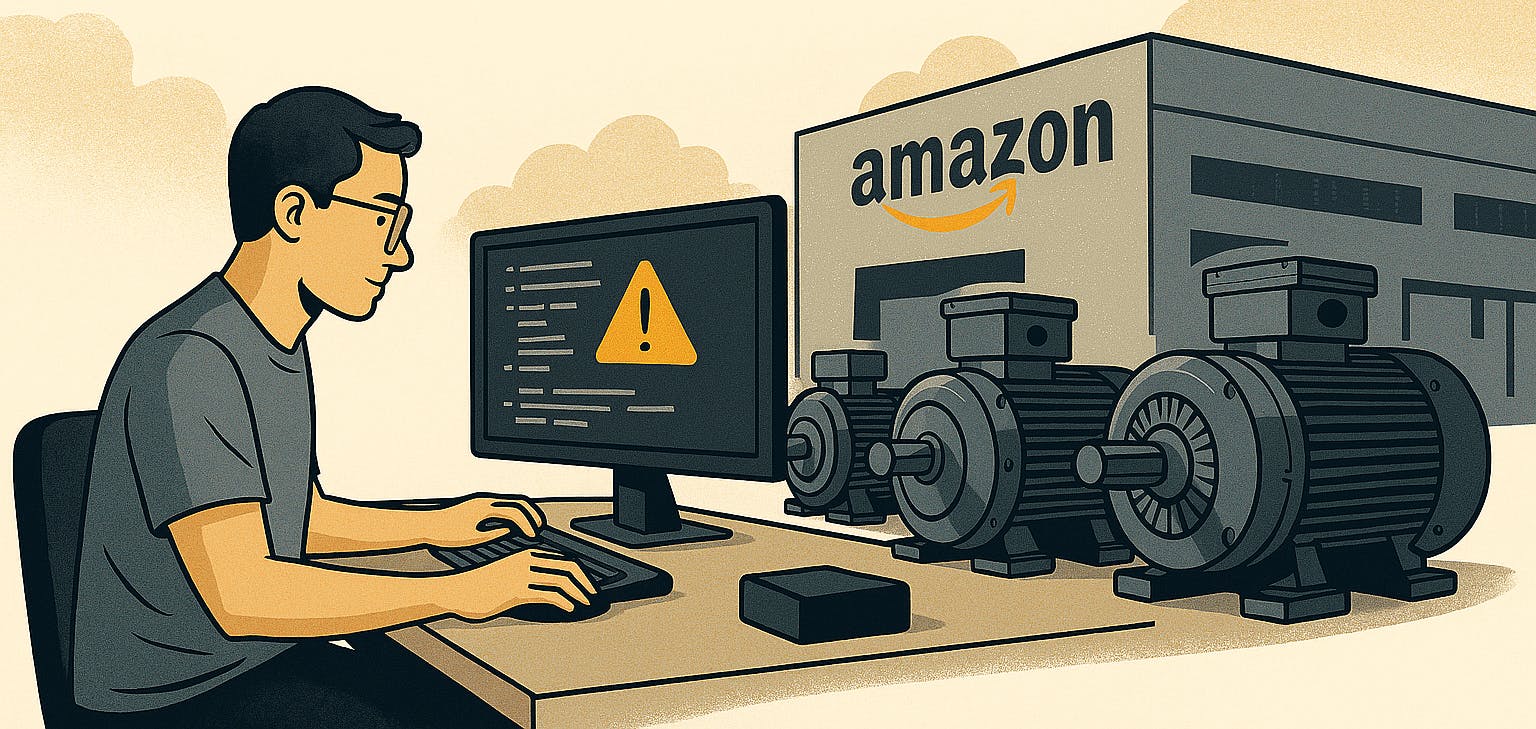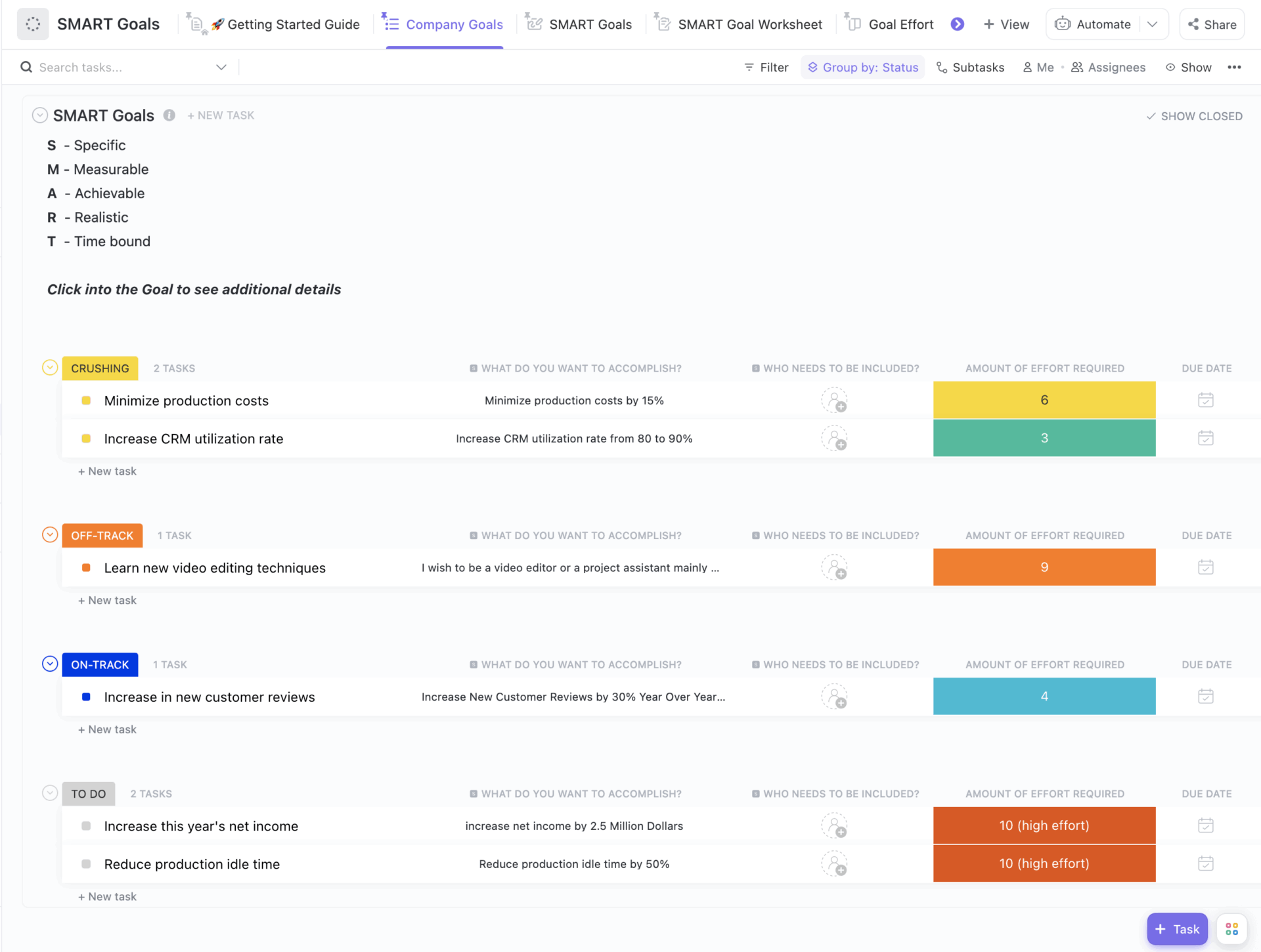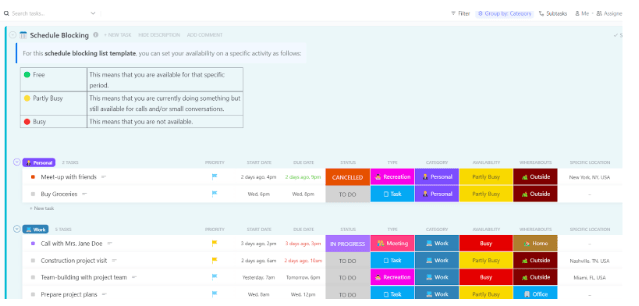How a solo-built real-time VFD monitoring system quietly prevents hardware failures, reduces downtime, and generates millions of data points for predictive maintenance — all while costing less than a cup of coffee per year.
The Problem: Too Little, Too Late
At Amazon fulfillment centers, motors quietly power the movement of millions of packages. But when one fails — often due to an overloaded or overheating Variable Frequency Drive (VFD) — the impact isn’t small.
A single failure can cause:
- Thousands in equipment damage
- Disrupted package flow
- Scrambled technician response
- Escalations that burn time and money
I was the Control Systems Lead during the launch of a new Amazon site. The tech stack was impressive. The visibility into VFD health? Practically nonexistent.
If a VFD tripped or ran hot, we didn’t know until someone spotted a problem after it happened. That wasn’t good enough. So I built a tool that would watch every motor — in real time.
The Solution: Real-Time VFD Monitoring
I designed and built an app that runs in the background 24/7, monitoring every VFD across the building. Here’s what it does:
- Reads 500+ VFDs every 2 seconds
- Uses multithreading to parallelize polling by control cabinet
- Filters out false positives like inrush spikes
- Sends Slack alerts only if overload >110% persists for 6+ seconds
- Avoids alert spam by waiting 5 minutes before repeating on the same tag
- Stores all data in AWS S3 for trend analysis and future audits
- Costs only ~$0.06/month to operate
What It Looks Like in Action
When a VFD crosses the overload threshold, the app automatically sends a Slack alert like this:
⚠️ VFD Overload Detected
Tag: 8xxxxx | Cabinet: CCxxx
Load: 117% | Amps: 4.6
Time: 2025-05-07 10:03:50
This goes straight to the PDM team, who can open the Trend Viewer tool I built alongside it. They simply enter the VFD tag and time window to see the load % over the last minute, hour, or day — with no need for manual trend extraction or CSV gymnastics
With just a few clicks, they can:
- Enter the VFD tag number and ID (from the alert)
- Select a time window: 1 min, 5 min, 30 min, 1 hr, 24 hrs, or custom
- Instantly visualize load % trends
- Get VFD’s physical location in the building
- Identify spikes, dips, or patterns leading up to the alert
- Export the graph for reporting or escalation with one click
No manual CSVs. No log file digging. Just fast, visual diagnostics the moment they’re needed.
This seamless integration means overloads are no longer mysteries — they’re data-driven events with instant visibility. That’s the power of combining real-time alerts with on-demand historical insights..
The Impact: Quiet Savings, Big Numbers
This system:
- Prevents 2–3 failures/month on average
- Saves $1,500–$3,000 per failure in equipment
- Enables data-driven maintenance
- Logs 2.4M+ data points/week for engineering analysis
- Costs ~$0.06/month(AWS S3 + PUTs within Free Tier)
📊 Estimated Annual Savings: $100K–$115K+
And that’s in just one building.
Why I Built It (Alone)
I didn’t have a team or a project budget. Just a problem no one had time to solve — and the skills to fix it myself.
I used Python, multithreading, Slack’s API, and AWS’s free tier to design something that could:
- Run quietly and reliably
- Stay out of people’s way
- Only speak up when something mattered
Most of all, I built it so technicians wouldn’t be left guessing after something failed.
Final Thoughts
I didn’t build this system for recognition — I built it because I was tired of preventable failures, delayed escalations, and engineers like me working in the dark.
It started as a background app on a designated PC. Now, it’s monitoring hundreds of motors in real-time, sending smart alerts, generating millions of data points, and quietly preventing over $100K in losses every year — all from a single building.
This is what automation should be: fast, low-cost, invisible until it’s needed, and built with empathy for the people using it.
And if you’re an engineer solving similar problems with limited resources:
Don’t wait for approval. Don’t wait for the perfect tech stack.
Build it anyway.
The views expressed here are my own and do not represent my employer












